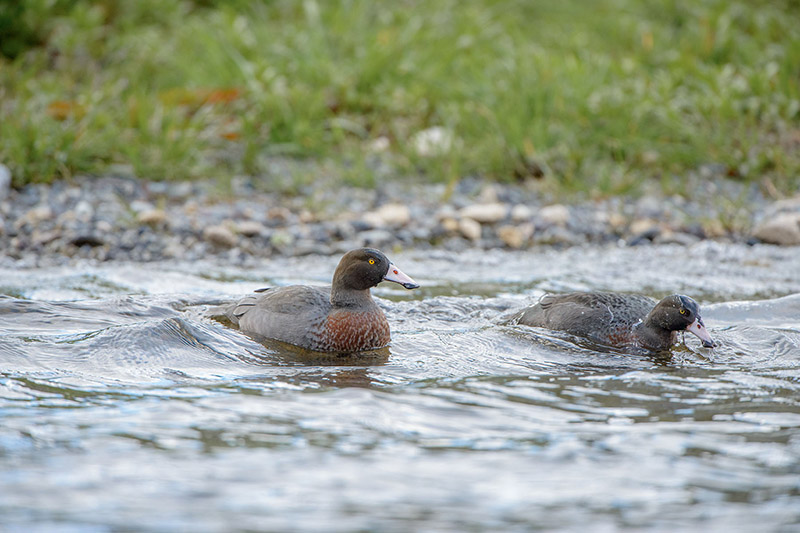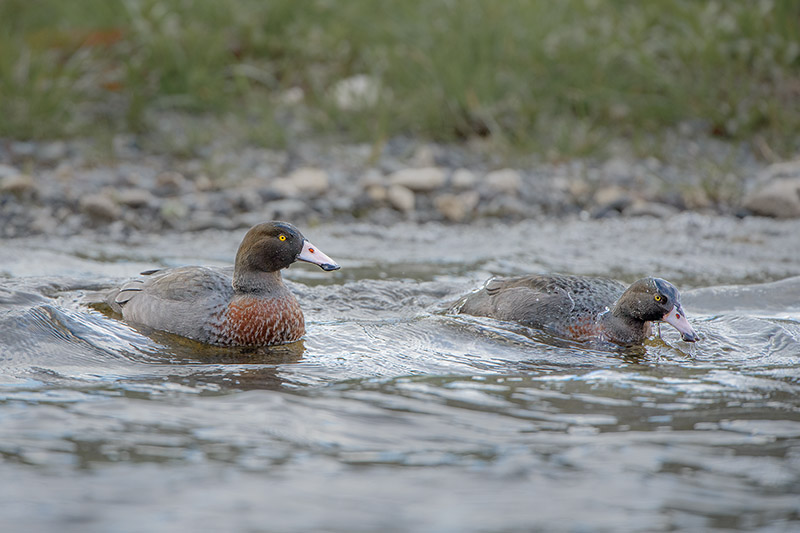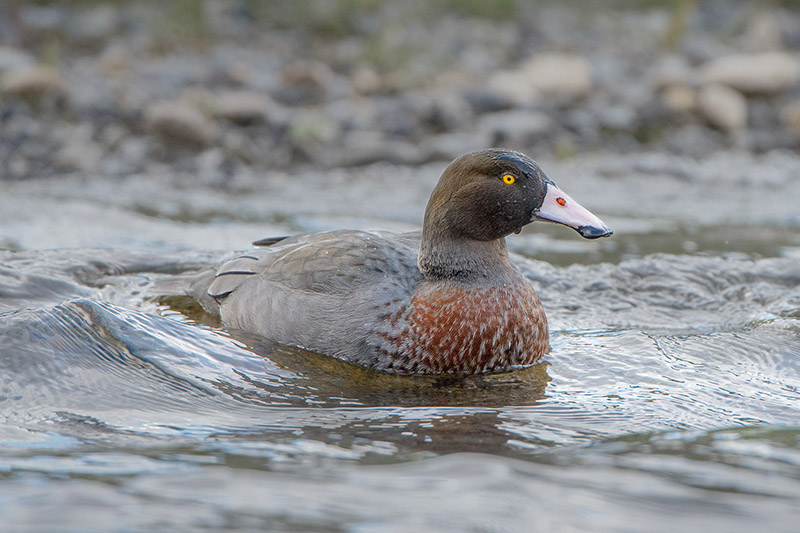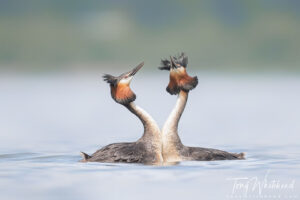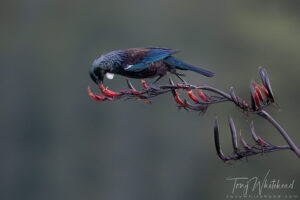During a recent trip from Taupo to the Whakapapa Ski field we stopped off at the Tongariro where it passes through Turangi in the hope of spotting Blue Duck. From the swing bridge I saw 2 ducks in the water just below the Hydro Pool and on getting closer could confirm that there were a pair of Blues Duck or Whio. They were quite unconcerned and just slowly feeding their way up along the shallows. We managed to get ahead of them on the opposite bank and clamber down some large boulders to get a spot at water level and wait for them to move up across the main current from us.
During a previous solo camping trip I had been lucky to find some very co-operative Blues in lovely light and captured some photos that I am unlikely to better (see my NZ Birds gallery for a few of these). Edin and I had repeated that trip earlier this year and though we saw some Blue ducks we weren’t rewarded with any really good images so I was keen for her to get a chance on this pair. We set up the D800 with the 500mm and 1.4x converter and were able to get some decent framing with this combination. The light was overcast and with the grey/blue of the ducks and rocks and some bright water +1.3 stops of exposure compensation gave us a decent exposure and shutter speed of about 1/800 at ISO 1600. I took a couple of pictures before passing the camera over to Edin and on processing them was again impressed with the performance of the D800 as a bird camera. The relatively slow frame rate has received a lot of attention as a limiting factor for this body for birds and I was initally rather anxious about using it after the 9fps from my D3s. For birds in flight it can be an issue in terms of limiting choices in selecting images based on subtleties of wing position but I have found the increased cropping options due to the pixel density to generally be a preferable trade-off.
No matter how long a lens you have, reach is always an issue with birds. Fieldcraft and understanding bird behaviour goes a long way to addressing this but adding the relative increased reach that the D800 gives, significantly enlarges the area you can image from a fixed point. I have my function button set to allow quick changes to the crop size so can quickly change from full frame to 1.2x of 1.5x crop with the latter 2 also giving a higher frame-rate with the battery pack. It is in some ways the equivalent of having a built in 1.5x teleconverter and I found on a recent trip to Australia that I was using the 500 without a teleconverter as the in-camera crop was more convenient that adding and removing a physical teleconverter in the conditions we were photographing in and as a bonus there was no 1 stop loss of light.
Attached are 3 versions of one frame shot as full resolution with 2 crops removed from it – even the relatively heavy crop down to the single duck retains enough resolution in the file to discern individual feather fibres in the plumage. When I first got the D800, I thought that it would be mainly useful for landscape and studio portrait work and that it would only be useful in fairly specific bird situations. I now find it as my first choice in all circumstances unless I need the high frame rate and extra stop or 2 of high ISO that the D3s offers.
On our return from the mountain, we again stopped in at the river and the ducks were again in the same area but due to some intervening rain the boulders were now damp so we weren’t game to clamber down again. From our experience it may be well worth a stop if you’re looking for Blue Duck images. Edin should have some of her pictures up on her blog in the next few weeks.
